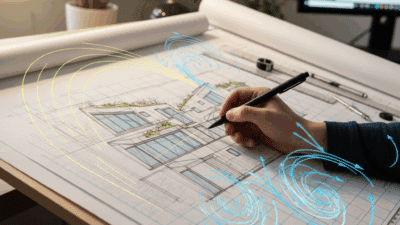Hey there, aspiring artist! Ever scrolled through social media, stumbled upon some incredible anime fan art, or perhaps re-watched your favorite series for the tenth time, and thought, “I wish I could draw like that?” You’re not alone! The world of anime art is vibrant, expressive, and undeniably captivating. If you’ve been dreaming of bringing your own characters and stories to life, then you’re in the perfect place. This isn’t some secret club for prodigies; it’s an accessible journey, and today, we’re going to dive deep into easy ways to learn anime drawing and kickstart your very own creative adventure.
Forget about feeling overwhelmed by complex techniques or years of art school. We’re talking about breaking down the process, understanding the core elements, and finding joy in every stroke. Whether you’re a complete beginner who can barely draw a stick figure or someone looking to refine existing skills, this guide is designed to empower you. So grab your pencil, or open your digital canvas, and let’s unlock your inner anime artist!
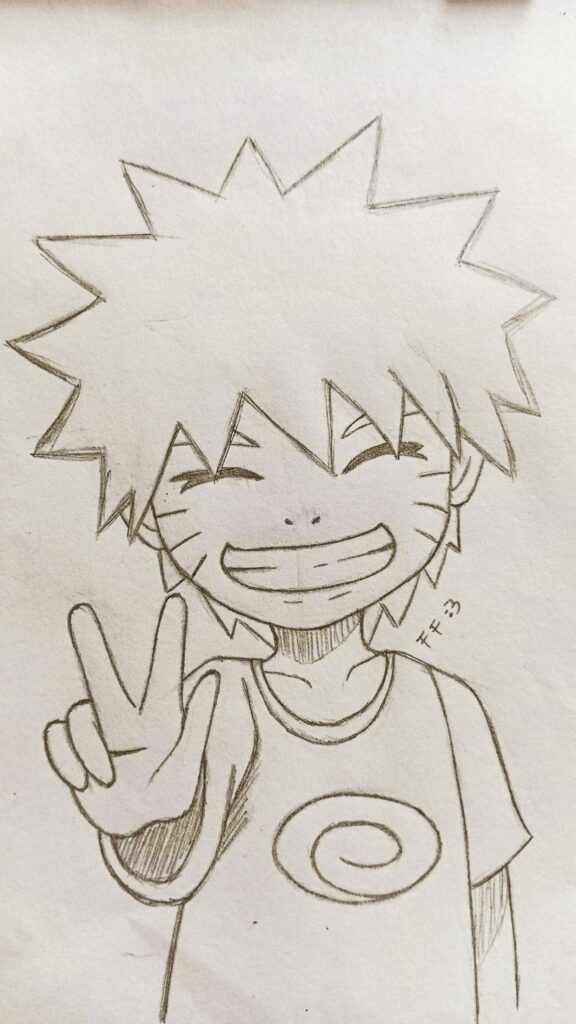

Why Anime? Understanding the Irresistible Appeal
Before we pick up our tools, let’s take a moment to appreciate why anime art is so incredibly popular and why it draws so many aspiring artists in. It’s more than just a style; it’s a culture, a storytelling medium, and a truly unique visual language.
Unique Aesthetics
Anime art boasts a distinct visual style that sets it apart. Think about those iconic large, expressive eyes that convey a world of emotion, the often simplified yet dynamic body shapes, and the vibrant, sometimes fantastical, color palettes. Unlike Western animation or comics, which often prioritize realism or gritty detail, anime frequently embraces a stylized approach that can range from super deformed (chibi) to hyper-realistic, yet always maintains that recognizable “anime” flair. This aesthetic freedom allows for incredible creativity and visual storytelling that can be both endearing and epic.
Expressive Characters
One of anime’s greatest strengths lies in its characters. Artists use specific conventions to convey a vast spectrum of emotions—from wide-eyed wonder to intense fury—often with exaggerated but clear visual cues. This isn’t just about big eyes; it’s about how the eyebrows slant, the mouth shape, the sweat drops, or the dynamic lines that explode around a character. Learning to draw anime means learning to inject personality and feeling into every design, making your characters instantly relatable and memorable.
Storytelling Power
Anime art isn’t just pretty pictures; it’s a powerful narrative tool. Every pose, expression, and background element contributes to the story being told. From action-packed shonen battles to heartwarming slice-of-life moments, the art amplifies the emotional impact and moves the plot forward. When you learn anime drawing, you’re not just learning to copy; you’re learning to communicate complex ideas and emotions visually, inviting your audience into the worlds you create.
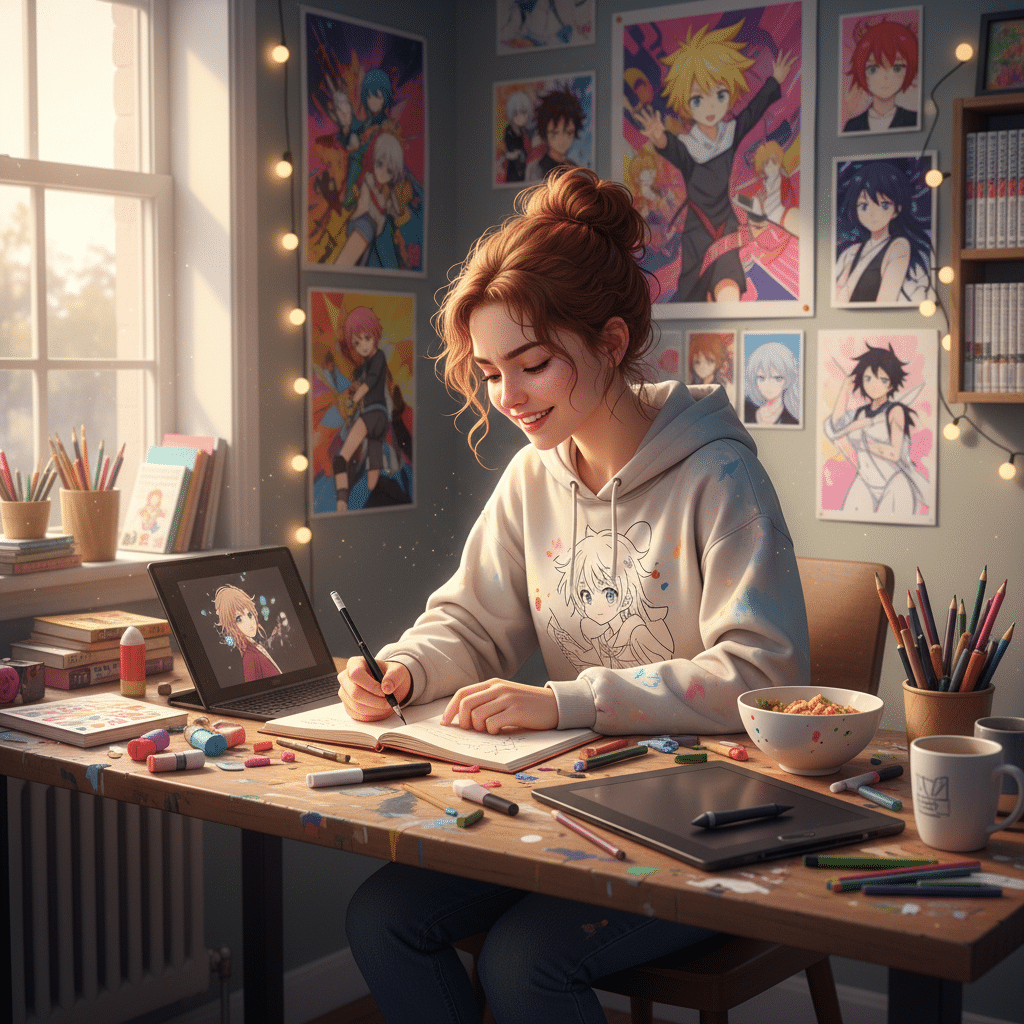
Gearing Up: Essential Tools for Your Anime Journey
Alright, inspiration’s flowing! Now, what do you actually need to start? The good news is, you don’t need a high-end studio to begin. You can start with very basic supplies, whether you prefer traditional methods or want to dive straight into digital art.
Traditional vs. Digital
This is often the first big decision. Both have their merits and their own learning curves.
- Traditional: This involves physical materials like pencils, paper, pens, and markers. It’s often recommended for absolute beginners because it helps build fundamental hand-eye coordination and a tactile understanding of lines and pressure. There’s a certain satisfaction in seeing your drawing physically manifest on paper.
- Digital: This uses graphic tablets, styluses, and software. It offers incredible flexibility: endless colors, undo buttons, layers, and easy corrections. While it can feel less intuitive initially, its efficiency and editing power are a huge draw for many artists. Many professional anime artists work exclusively digitally.
Basic Traditional Supplies
If you’re starting traditionally, here’s what you’ll want:
- Pencils: A good set of drawing pencils (like HB, 2B, 4B) will give you a range of line weights and shading options.
- Paper: Simple printer paper is fine for practice, but consider a sketchpad with slightly heavier paper for better results, especially if you plan to ink.
- Eraser: A good quality kneaded eraser or a plastic eraser will be your best friend for correcting mistakes without damaging the paper.
- Inking Pens (Optional but Recommended): Once you’re comfortable with your pencil sketches, fine-tip pigment liners (like Micron pens) can make your lines clean and crisp, giving your art that professional anime look.
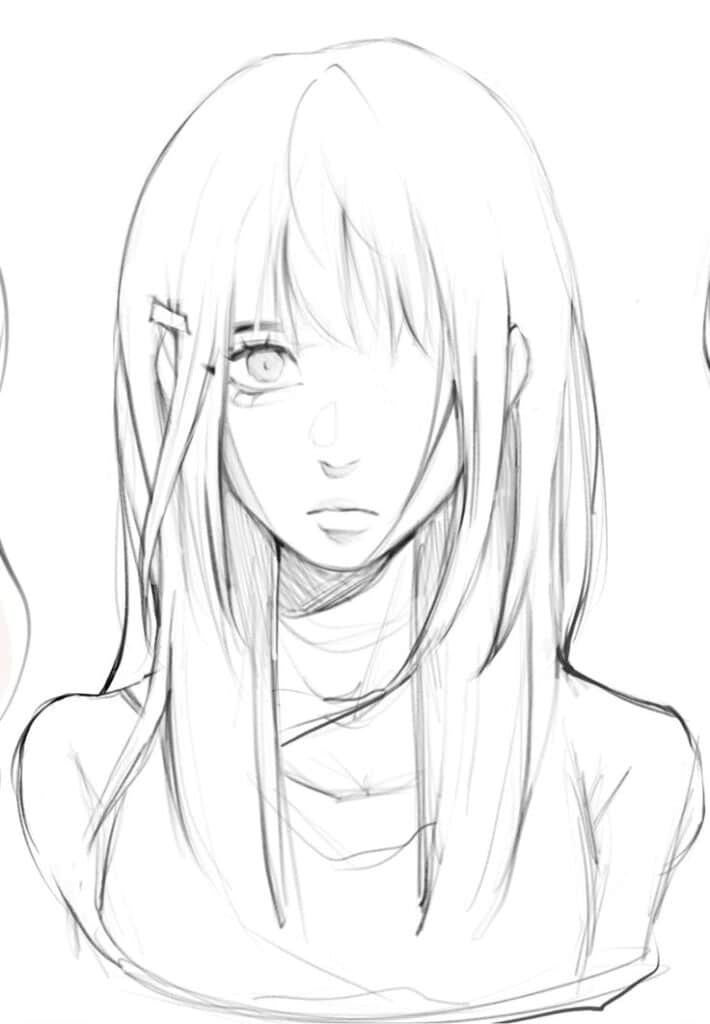
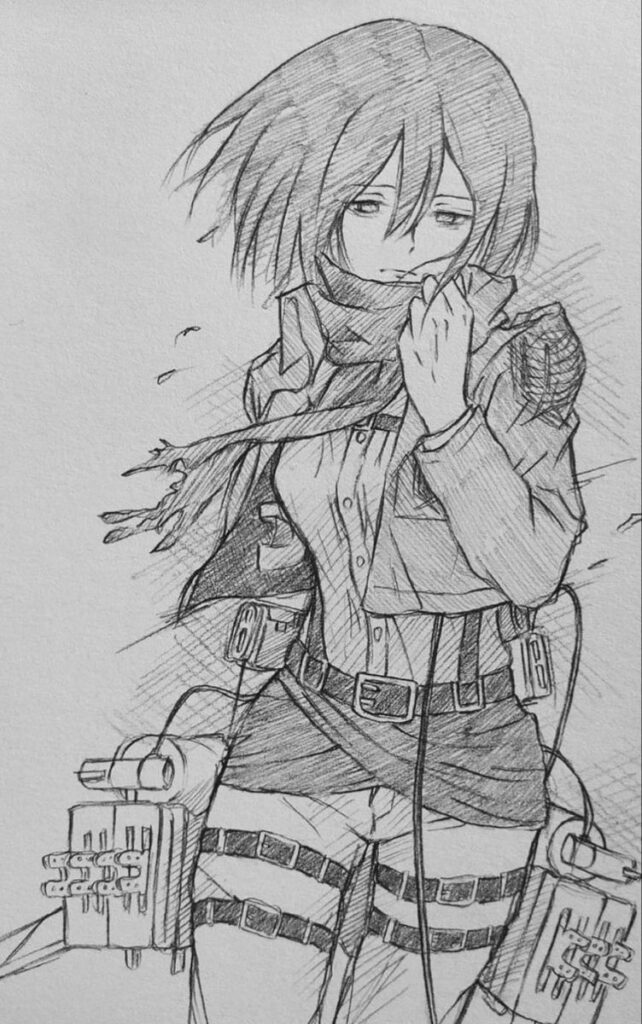
Digital Essentials
For the digital route, here’s what you’ll need:
- Graphics Tablet: This is crucial. Brands like Wacom, Huion, or XP-Pen offer great options for beginners to pros. Some tablets have screens you draw directly on (more expensive), while others connect to your computer screen.
- Stylus: This comes with your tablet and is pressure-sensitive, mimicking a real pen or brush.
- Drawing Software: Popular choices include Clip Studio Paint (very popular among manga/anime artists), Photoshop, Krita (free!), Medibang Paint Pro (free!), or Procreate (iPad only). Choose one that fits your budget and offers the tools you need.
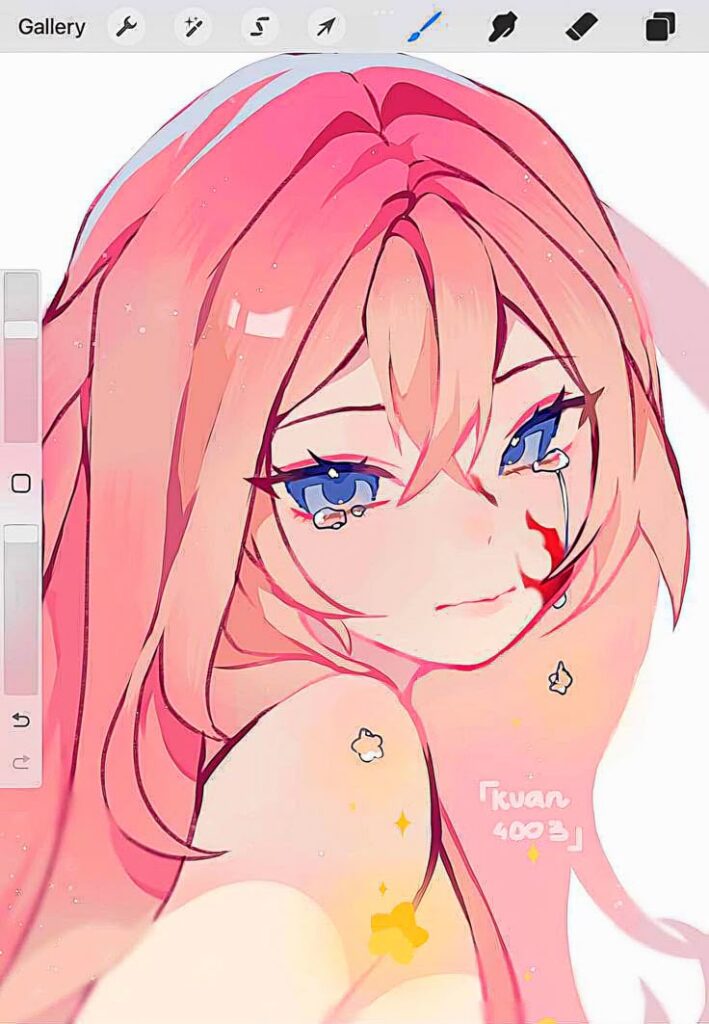
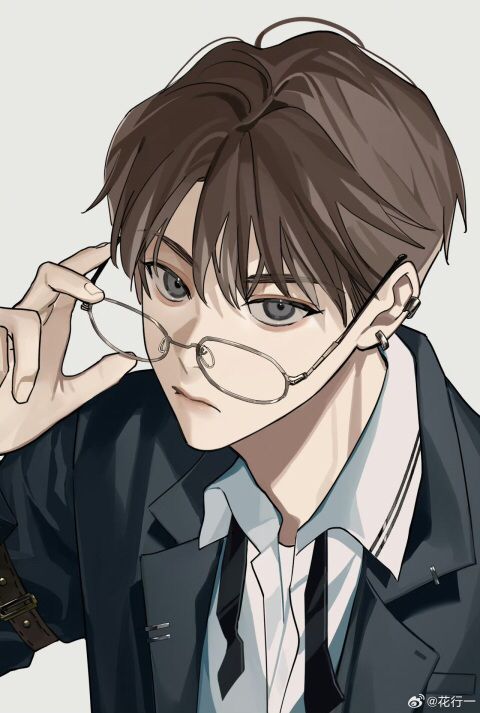
The Fundamentals: Building Your Artistic Foundation
No matter the style, all great art is built on fundamental principles. Anime drawing is no different. Understanding these basics will provide a solid framework for all your future creations. Think of it as learning your artistic ABCs before writing a novel.
Anatomy Basics: Simplifying for Anime
Don’t panic! You don’t need to be a medical student. Anime often simplifies human anatomy, but understanding the underlying structure is key to making your characters look believable and dynamic.
- Stick Figures: Start here! Seriously. They help you visualize pose and proportion without getting bogged down in details.
- Basic Shapes: Learn to break down the human body into simple forms: circles for joints and heads, cylinders for limbs, and boxes for torsos and hips. This “skeleton” helps you construct characters in 3D space.
- Understanding Movement: Focus on how joints articulate and how the body shifts weight. This will make your characters feel alive, not stiff.
Proportions: Head-to-Body Ratios
Anime characters come in various proportions, but generally, artists use head-to-body ratios as a guide.
- Chibi/Super Deformed: Often 2-3 heads tall, emphasizing cuteness and exaggerated features.
- Young/Teenage Characters: Typically 5-7 heads tall. This is a common proportion for many shonen and shojo protagonists.
- Adult/Heroic Characters: Can be 7.5-8 heads tall, conveying maturity and a more imposing presence.
- Practice: Start by drawing a vertical line and dividing it into equal segments to practice different head ratios.
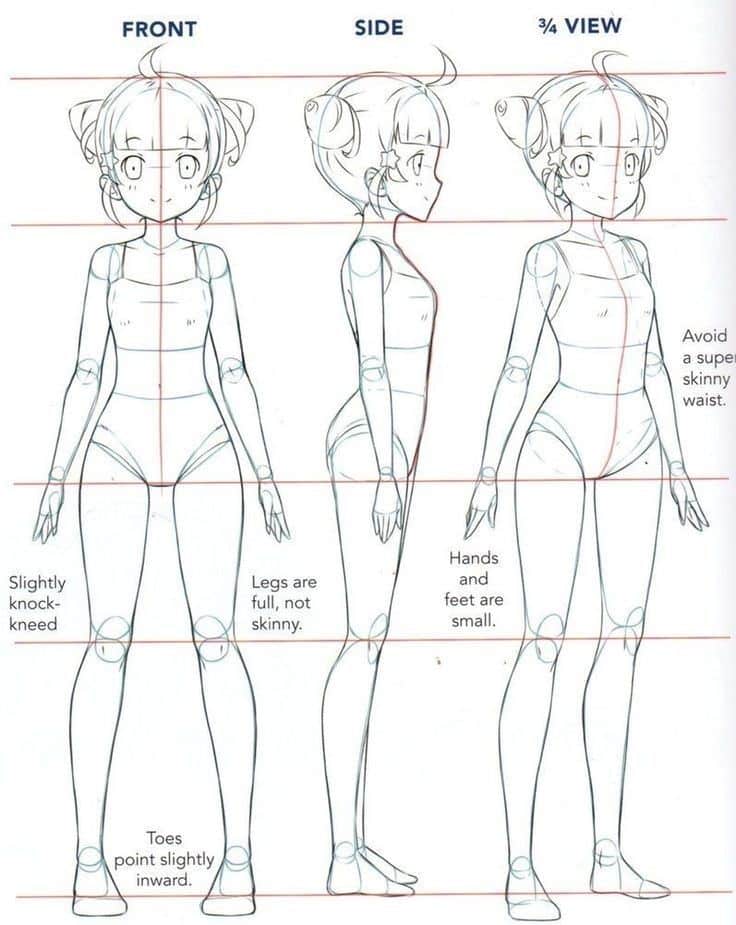
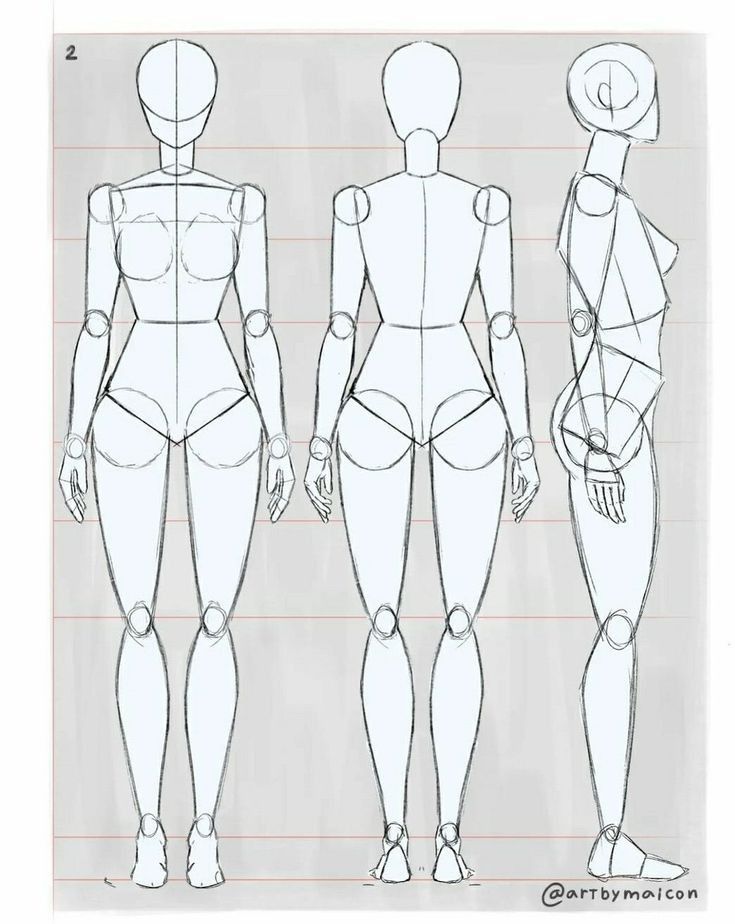
Posing and Gesture
A character standing stiffly is boring! Gesture drawing is about capturing the energy and movement of a pose quickly.
- Lines of Action: These are imaginary lines that flow through the spine and limbs, giving your character a sense of dynamism. Practice drawing quick, flowing lines to capture the essence of a pose.
- Weight Distribution: Understand how a character’s weight shifts with different poses. This makes them look grounded and natural.
- Reference, Reference, Reference: Look at real people, photos, or even 3D models to understand how bodies move and pose. Don’t be afraid to use references; it’s how pros learn!
To truly grasp the foundational lines and shapes, exploring anime sketching techniques can provide invaluable insights into breaking down complex forms into manageable strokes.
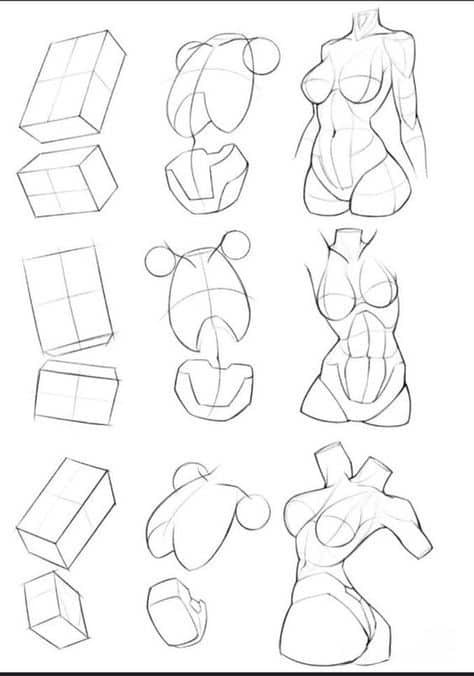
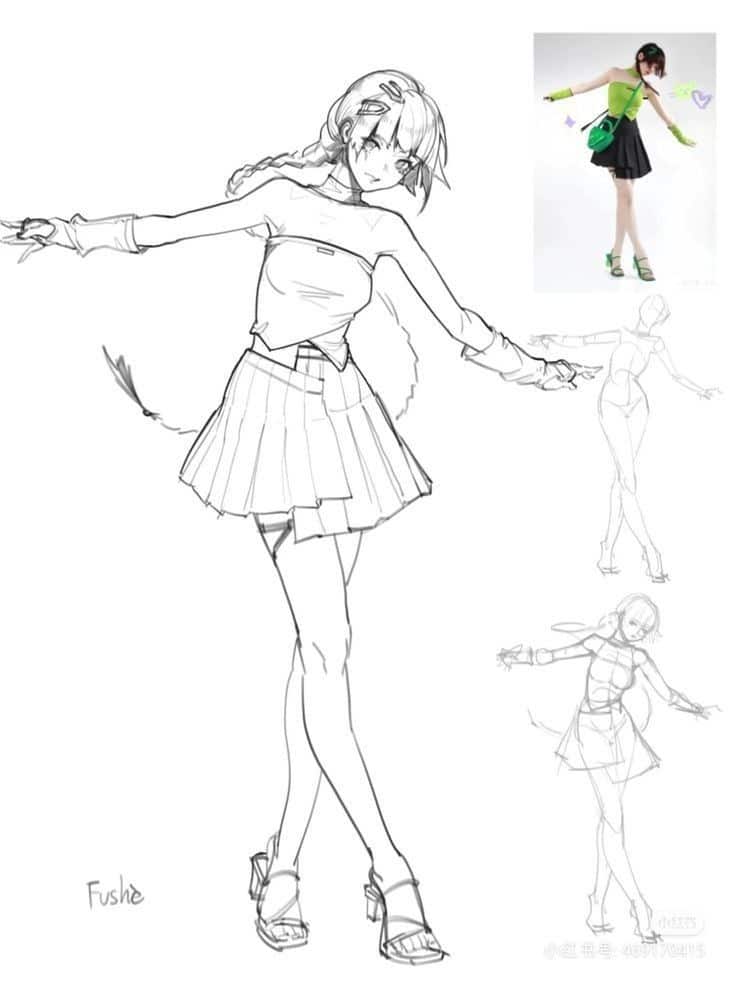
Line Art
Clean, confident lines are a hallmark of anime.
- Varied Line Weight: Don’t draw everything with the same pressure. Thicker lines can indicate shadows or foreground elements, while thinner lines suggest details or distance.
- Practice Strokes: Fill pages with straight lines, curved lines, circles, and ellipses. This builds muscle memory and control.
- Clean Up: Once your sketch is done, go over it with a lighter hand, then ink (traditionally) or refine (digitally) with steady, deliberate strokes.

Mastering Anime Character Elements
Now that you have your foundational “skeleton,” let’s flesh it out! The individual features of an anime character are what give them their unique charm and distinct personality.
Faces and Expressions
The face is the focal point, and anime excels at conveying emotion through it.
- The Head Structure: Start with a circle, add a jawline, and then guide lines for the eyes, nose, and mouth.
- Eyes: Anime eyes are incredibly varied. They’re often large and reflective, with pupils and irises that communicate much. Pay attention to their shape, the size of the pupil, the reflections (highlights), and how the eyelids convey emotions (wide for surprise, squinted for anger, heavy for sadness).
- Nose: Often simplified to a small dot, a subtle line, or a tiny triangle, depending on the style and angle.
- Mouth: A powerful tool for expression. A simple curve can be a smile, a jagged line can be a shout, and a wide-open shape can convey shock. Don’t forget teeth and tongue when appropriate!
- Eyebrows: Crucial for expression. Raised, furrowed, or angled eyebrows drastically change the character’s mood.
Hair Styles: Flow and Volume
Anime hair is often stylized and gravity-defying, but it still follows some rules.
- Sections, Not Strands: Don’t draw individual hairs. Think of hair as clumps or flowing ribbons.
- Volume and Flow: Give the hair volume by lifting it slightly off the skull. Consider how it would flow with movement or wind.
- Variety: Spiky, wavy, straight, braided – experiment with different styles. Look at your favorite anime characters for inspiration!
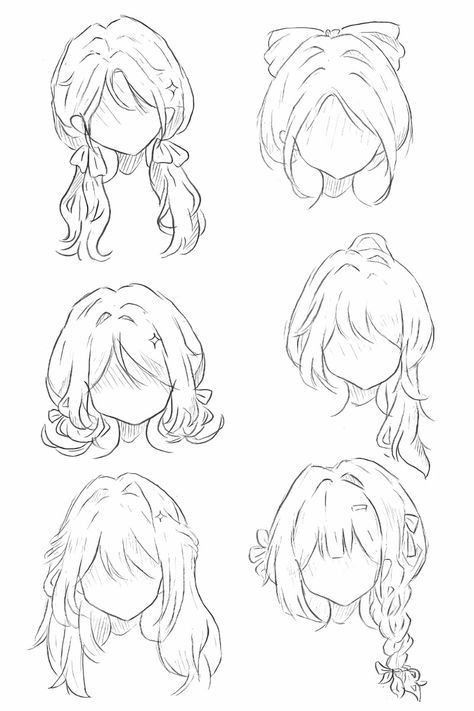

Hands and Feet: The Artistic Nemesis (Simplified Approach)
Hands and feet are notoriously challenging for many artists, but in anime, they can often be simplified.
- Hands: Break them down into basic shapes: a main palm shape, cylinders for fingers, and a separate thumb. Focus on gesture and general form rather than hyper-realistic detail. Practice drawing them in various positions, holding objects, or forming gestures.
- Feet: Often less detailed than hands, especially in full-body shots. Think of them as wedge-like shapes for shoes or simplified forms for bare feet. For character-specific examples and guidance, check out detailed tutorials like how to draw Bloom from Winx Club step by step guide, which can help you understand character-specific features.
Clothing and Folds
Clothing adds character and depth.
- Drapery, Not Body Paint: Clothing should have volume and respond to gravity and the body underneath.
- Fabric Folds: Learn basic fold types: pipe folds, zigzag folds, spiral folds, etc. These occur at joints, where fabric gathers, or where it’s pulled taut.
- Reference Real Clothes: Observe how real clothing drapes and wrinkles. This is invaluable!


Bringing Your Characters to Life: Posing, Composition, and Storytelling
Drawing a static character is a great start, but the real magic happens when you bring them into dynamic poses, place them in compelling compositions, and use them to tell a story.
Dynamic Poses
A dynamic pose immediately draws the eye and conveys action or strong emotion.
- Exaggeration: Anime often exaggerates poses for dramatic effect. Push those lines of action!
- Perspective: Foreshortening (when something appears shorter because it’s angled towards the viewer) is a powerful tool for dynamic poses. Practice drawing limbs or objects coming towards or away from the viewer.
- Action Lines: Think about invisible lines that guide the viewer’s eye and emphasize movement.
Basic Composition
Composition is how you arrange elements within your frame. A good composition guides the viewer’s eye and enhances the story.
- Rule of Thirds: Imagine dividing your canvas into a 3×3 grid. Placing key elements along these lines or intersections often creates a more balanced and interesting image.
- Leading Lines: Use elements like roads, fences, or even character limbs to lead the viewer’s eye towards the focal point.
- Negative Space: The empty space around your subject is just as important as the subject itself. Use it to balance your composition.
Environmental Storytelling
The background isn’t just filler; it’s a character in itself.
- Setting the Scene: A bustling city street, a serene forest, or a futuristic lab all instantly tell the viewer something about the character’s world.
- Mood and Atmosphere: The environment can enhance the emotional tone. A dark, stormy sky can foreshadow danger, while a bright, sunny field suggests peace.
- Integrating Characters: Make sure your characters feel like they belong in the environment, interacting with it rather than just being pasted on top. If you’re looking for inspiration on how to make backgrounds work seamlessly with your characters, check out guides like how to draw a magical garden scene for detailed environmental ideas.
Character Interaction
Anime often features multiple characters interacting.
- Eye Contact: Where are characters looking? Direct eye contact can signify connection, confrontation, or deep emotion.
- Body Language: How are characters positioned relative to each other? Are they facing each other, turning away, or mirroring each other’s poses? This tells a story without words.
- Emotional Resonance: Ensure the interactions convey the intended feelings, whether it’s friendship, rivalry, romance, or conflict.

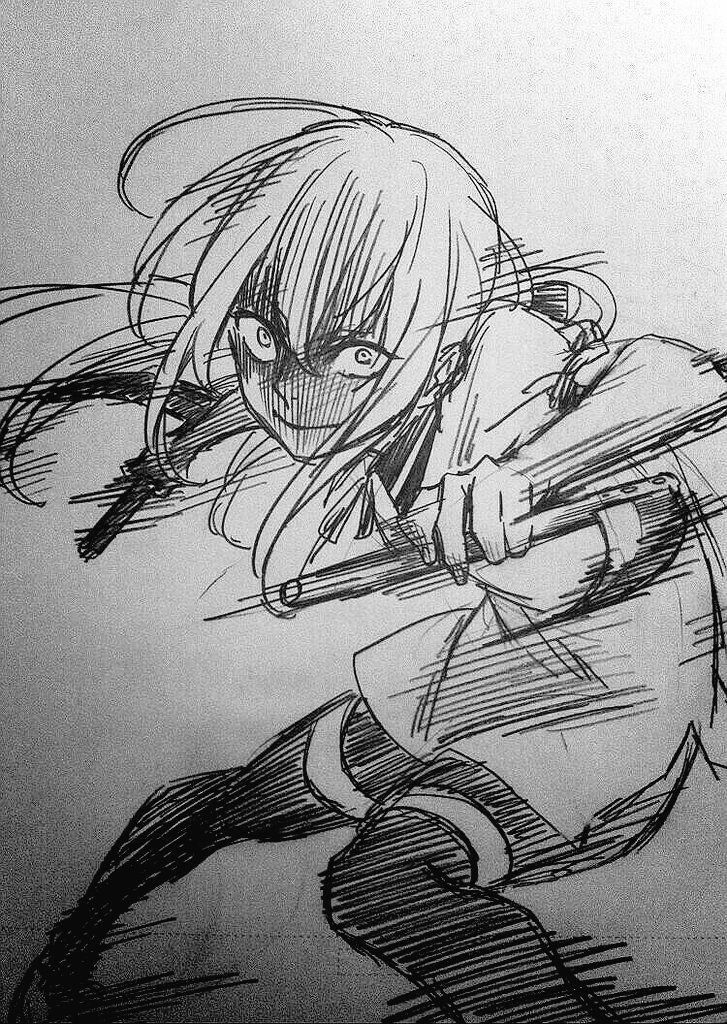
Adding Color and Depth: Shading and Rendering
Once your line art is solid, adding color and shading brings your anime drawing to life, giving it volume, mood, and atmosphere. This is where your characters truly pop off the page or screen.
Basic Shading Principles: Light Source is King
Understanding how light interacts with objects is fundamental to good shading.
- Identify Your Light Source: Before you add a single shadow, decide where your light is coming from. Is it from the top, side, front, or back? This single decision dictates where all your shadows and highlights will fall.
- Form Shadows: These are the shadows that appear on the object itself, caused by its own curves and planes turning away from the light.
- Cast Shadows: These are the shadows an object casts onto other surfaces (like the ground or another character). They often have sharper edges closer to the object and become softer further away.
- Midtones, Highlights, Core Shadows: Learn to differentiate these. Midtones are the general color, core shadows are the darkest parts on the object itself, and highlights are the brightest spots where light directly hits.
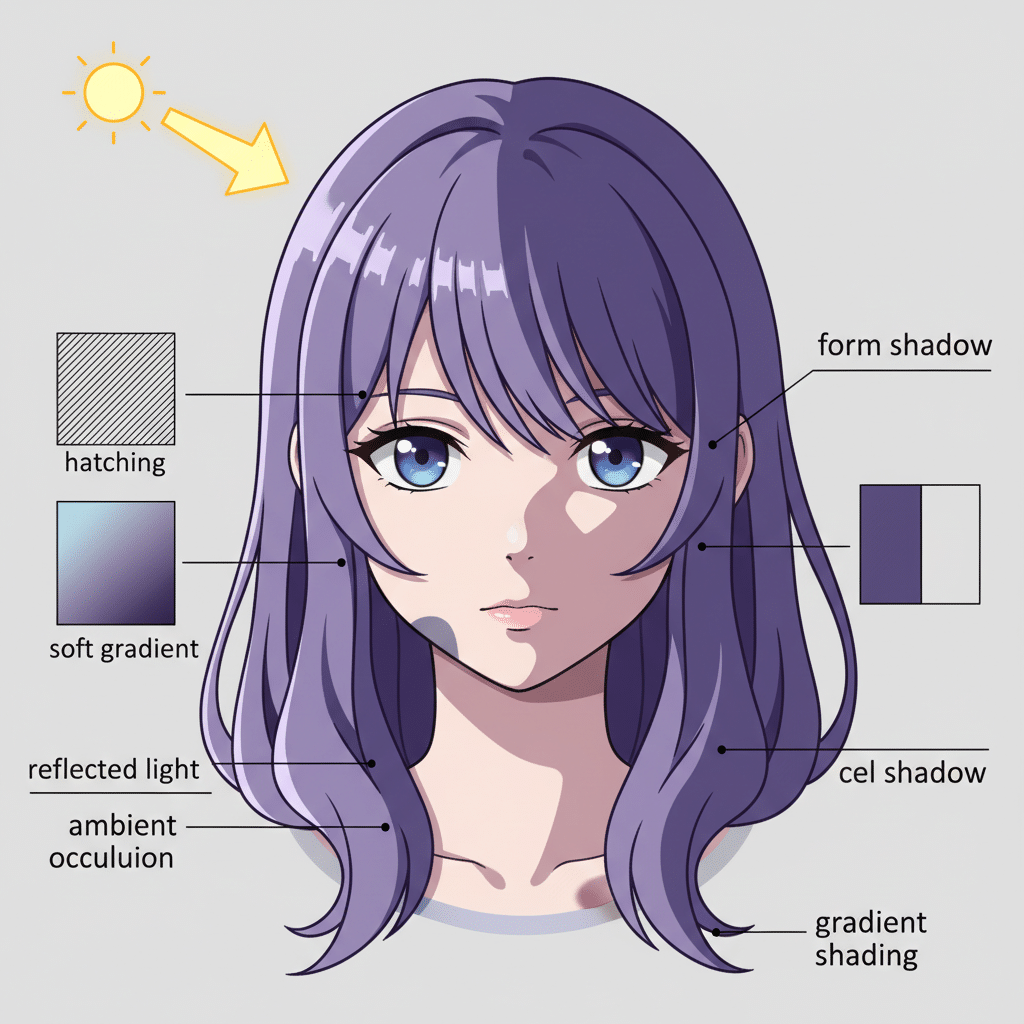
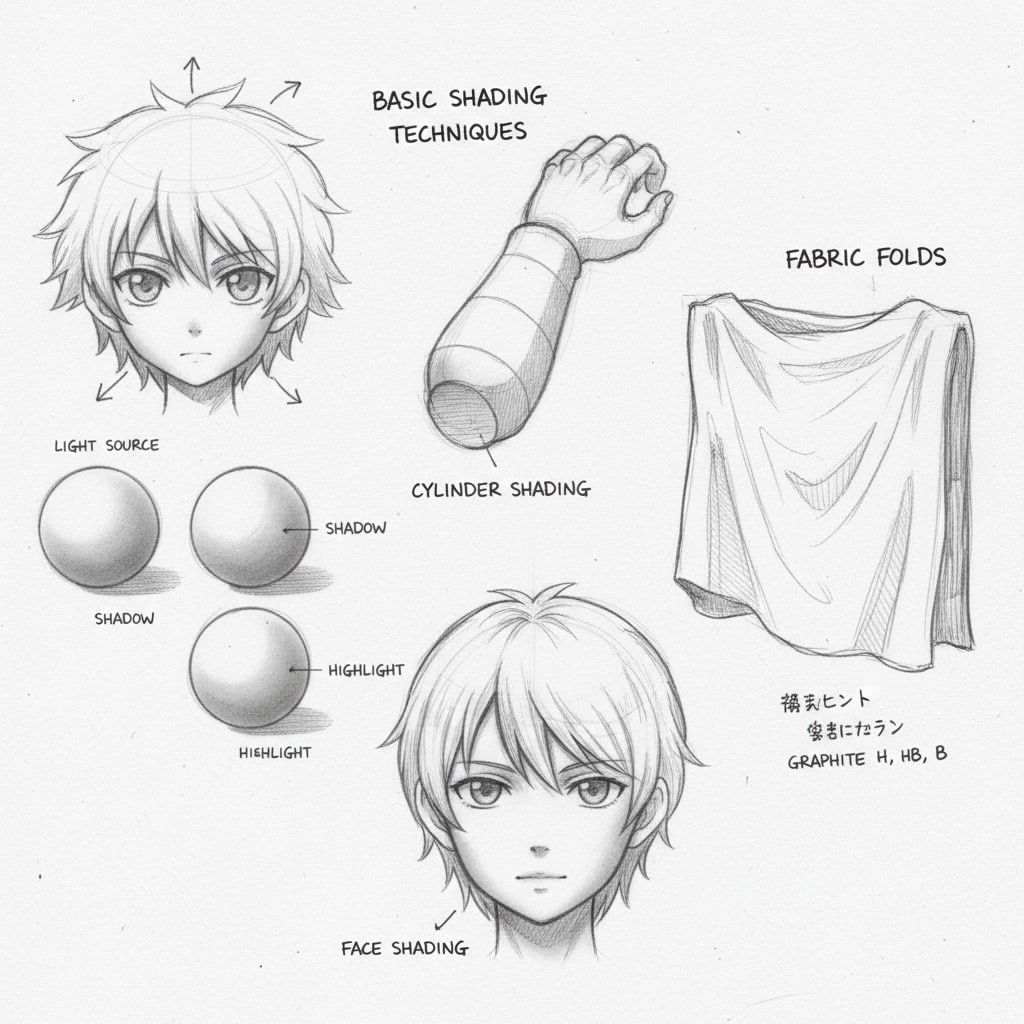
Cell Shading vs. Soft Shading
Anime typically uses two main shading styles:
- Cell Shading: This is characterized by sharp, distinct blocks of color for shadows, with no smooth gradients. It’s often used in traditional animation and gives a clean, graphic look. It’s fantastic for beginners because it’s easier to control and achieve consistent results. Think of it as painting within outlines.
- Soft Shading: This involves smooth gradients and blends between light and shadow, creating a more realistic and nuanced look. While beautiful, it’s generally more challenging and time-consuming, requiring a good understanding of color theory and blending techniques. Many digital artists combine elements of both.
Digital Coloring Techniques
If you’re working digitally, you have a wealth of tools at your disposal.
- Layers are Your Best Friend: Keep your line art on one layer, base colors on another, shadows on a third, and highlights on a fourth. This non-destructive workflow allows for easy adjustments.
- Clipping Masks: These allow you to paint on a layer, and the paint will only appear where there’s already content on the layer below it. This is invaluable for keeping shadows and highlights perfectly within your base colors.
- Blending Modes: Experiment with blending modes (like Multiply for shadows, Screen or Overlay for highlights) to create interesting effects and integrate colors seamlessly.
- Color Palettes: Learn about color theory (complementary, analogous, triadic colors) to choose harmonious and impactful color schemes for your characters and scenes.
Textures
Adding subtle textures can enhance realism and visual interest.
- Fabric Textures: How does cotton look different from silk or denim? Simple patterns or subtle shading variations can suggest different materials.
- Hair Textures: Even with stylized anime hair, hints of individual strands or a glossy sheen can add depth.
- Skin Tones: Varying skin tones with subtle blushes on cheeks or joints can make characters look more alive.

Practice Makes Perfect: Effective Learning Strategies
You’ve got the tools and the fundamentals. Now it’s time to put in the work! Consistent practice, coupled with smart learning strategies, is the fastest way to see improvement in your anime drawing skills.
Daily Sketching
This is non-negotiable for improvement.
- Quantity Over Perfection: Don’t aim for a masterpiece every day. Aim to fill pages with quick sketches, even if they’re rough. The goal is to build muscle memory and confidence.
- Varied Subjects: Don’t just draw faces. Sketch hands, feet, full bodies, animals, objects, and environments.
- Sketchbook Habit: Carry a sketchbook everywhere. You never know when inspiration will strike or when you’ll have a few minutes to draw.
For days when you’re feeling uninspired, prompts like what to draw on a rainy day atmospheric ideas can be a fantastic way to spark your creativity and keep that daily sketching habit alive.
Copying vs. Referencing
There’s a crucial difference, and both have their place.
- Copying (for learning): For beginners, directly copying your favorite anime art can be a great way to understand how shapes, proportions, and lines are constructed. It’s like tracing for toddlers learning to write. However, it’s vital to acknowledge that this is for learning, not for claiming as your own original work.
- Referencing (for creating): This is what professionals do. Instead of directly copying, you look at various sources (photos, other art, real life) to understand anatomy, clothing folds, poses, or expressions, and then you apply that understanding to your own unique creation. This develops your artistic vocabulary.
Learning from Tutorials
The internet is a goldmine for aspiring anime artists.
- YouTube Channels: Countless artists offer free tutorials on everything from basic anatomy to specific character designs. Find channels that resonate with your learning style.
- Online Courses: Platforms like Skillshare, Domestika, or Udemy offer structured courses, often taught by professional anime artists, that can guide you step-by-step through the learning process.
- Art Books/Manga Guides: Many published books specifically break down anime and manga drawing techniques.
- Break Down and Analyze: When watching a tutorial, don’t just follow along blindly. Pause, try to understand why the artist is doing what they’re doing, and experiment with their techniques.
Joining Communities
Art can be a solitary pursuit, but it doesn’t have to be.
- Online Forums/Discord Servers: Find communities of aspiring or established anime artists. Share your work, ask for feedback, and learn from others.
- Social Media: Instagram, DeviantArt, ArtStation, and Twitter are full of artists. Follow people who inspire you, engage with their work, and share your own.
- Local Art Groups: If available, joining a local drawing group can provide real-time feedback and motivation.

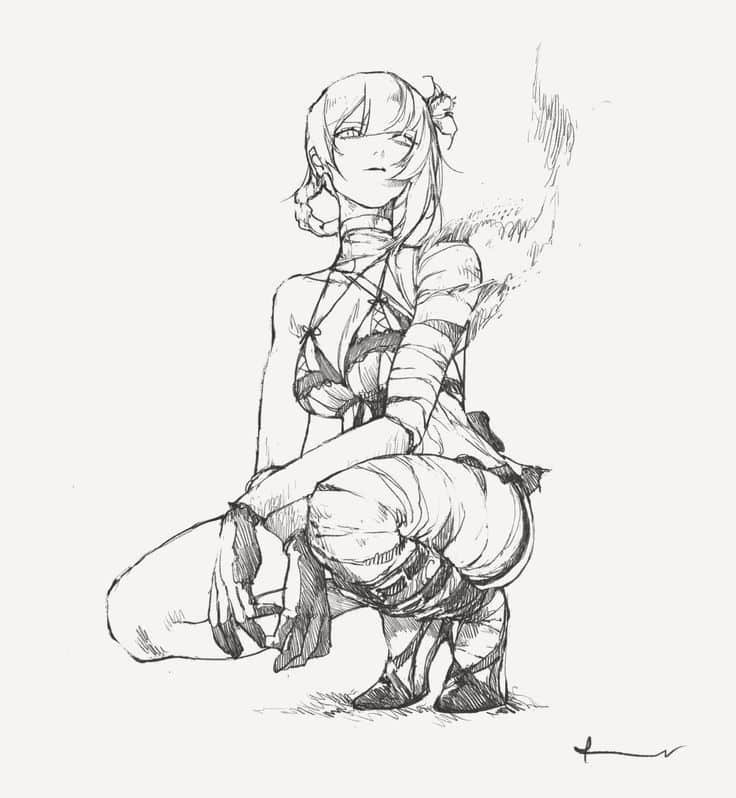
Overcoming Challenges and Staying Motivated
The artistic journey is full of ups and downs. There will be days when you feel like a drawing genius and days when you want to throw your sketchbook across the room. Learning to navigate these challenges is as important as learning the techniques themselves.
Dealing with Art Blocks
Every artist experiences them. That frustrating feeling where you have no ideas, or everything you draw just looks “wrong.”
- Take a Break: Step away from your art. Go for a walk, read a book, watch some anime! Sometimes, your brain just needs to reset.
- Change Scenery: Drawing in a new environment can spark fresh ideas.
- Try Something New: Experiment with a different medium, a different style, or even a completely different subject matter.
- Go Back to Basics: Sometimes, an art block means you’re trying to push too hard. Revisit simple gesture drawings or anatomy studies to rebuild confidence.
Embracing Mistakes
Mistakes are not failures; they are learning opportunities.
- Analyze, Don’t Despair: Instead of getting frustrated, look at your mistake and try to understand why it didn’t work. Was the proportion off? The perspective wrong?
- Learn from It: Use that understanding to inform your next drawing. Every “bad” drawing teaches you something.
- The Undo Button (Digital): Don’t be afraid to use it! But also, try to understand why you’re undoing something before just erasing blindly.
Setting Realistic Goals
Don’t expect to become a master overnight. Art takes time and dedication.
- Small, Achievable Goals: Instead of “draw a perfect anime character,” try “practice drawing 10 anime eyes today” or “complete one full-body sketch.”
- Focus on Process, Not Just Product: Enjoy the act of drawing, experimenting, and learning, not just the finished piece.
- Long-Term Vision: Keep your ultimate goals in mind, but understand that the path to them is paved with many small steps.
Celebrating Progress
It’s easy to get caught up in what you can’t do yet. Make sure to acknowledge how far you’ve come.
- Keep Old Art: Save your very first drawings. Look back at them periodically to see your improvement. It’s incredibly motivating!
- Share Your Work: Get feedback, but also share simply to celebrate your effort. Even if it’s just with a friend, sharing can boost your morale.
- Reward Yourself: Finished a particularly challenging piece? Learned a new technique? Treat yourself to a new art supply or a well-deserved break!
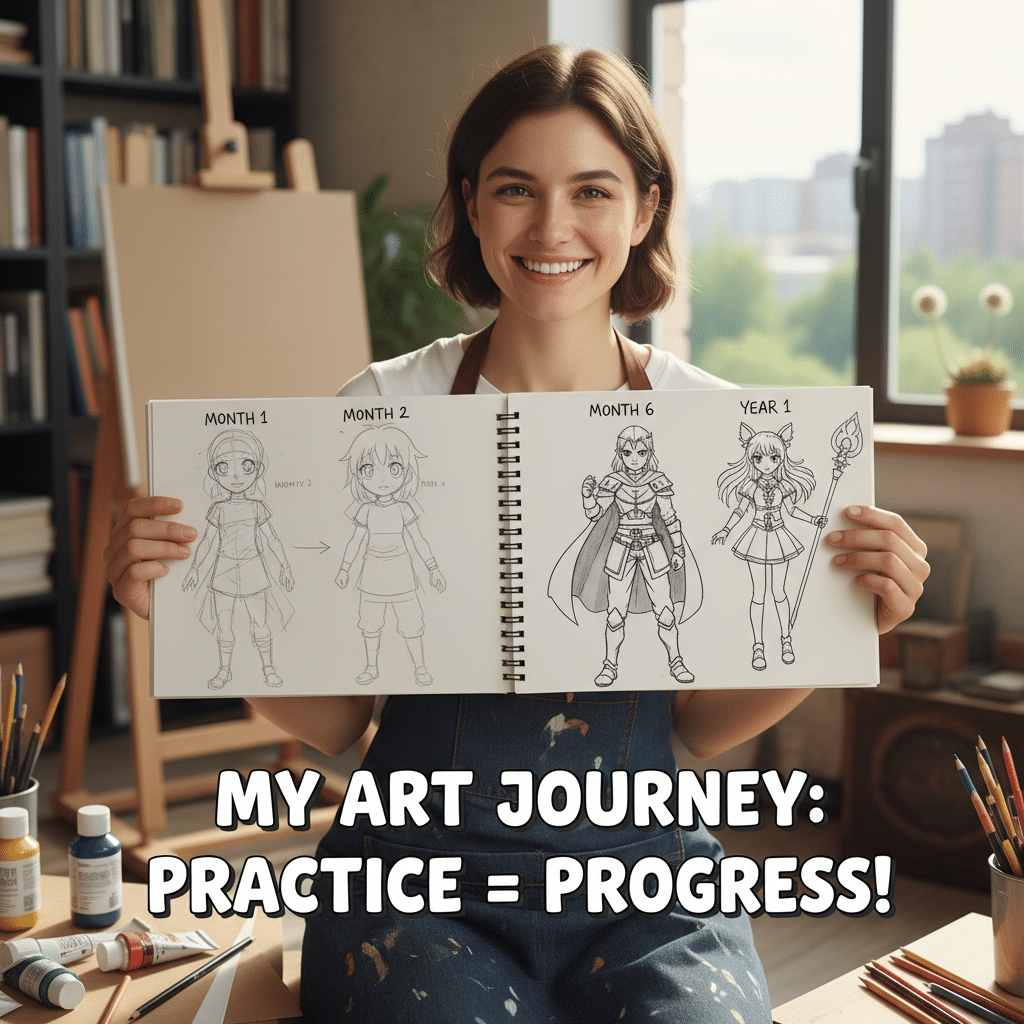
How can I start learning anime drawing if I am a beginner?
Begin by breaking down the process into basic steps like understanding fundamental shapes, practicing anatomy with simple figures, and experimenting with different expressions and poses. Use basic traditional supplies or digital tools, and focus on daily practice to gradually improve.
Why is anime art so appealing and popular?
Anime art is loved for its unique aesthetics, expressive characters, and storytelling power. Its stylized visuals, large expressive eyes, and dynamic, exaggerated poses make it captivating and relatable, offering a vivid visual language for storytelling.
What are some fundamental principles I should learn to improve my anime drawing?
Focus on understanding basic anatomy using simple shapes and stick figures, mastering head-to-body proportion ratios, practicing posing and gestures, and developing clean line art with varied line weight. These fundamentals form the foundation for all great art.
What tools do I need to start drawing anime?
You can start traditionally with pencils, erasers, and good quality paper or digitally with a graphics tablet, stylus, and drawing software like Clip Studio Paint or Krita. Traditional tools help build fundamentals, while digital tools offer flexibility and editing options.
How do I stay motivated and improve through challenges?
Set small, achievable goals and celebrate progress by saving old drawings and sharing your work. When facing art blocks, take breaks, try new subjects, analyze your mistakes to learn, and join art communities for support and feedback to keep your creative spirit alive.
- 25shares
- Facebook0
- Pinterest25
- Twitter0

